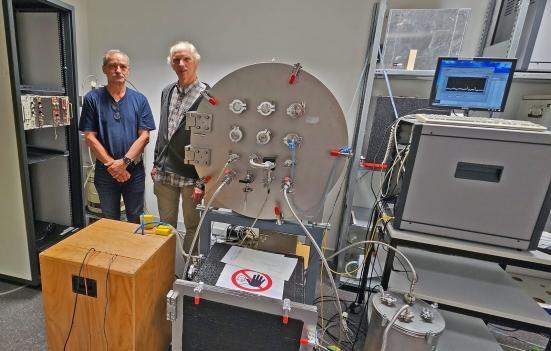Ionization chamber measures radon levels in the air
Radon is a naturally occurring gas that rises from the ground. It is odorless and colorless, but radioactive. It is therefore important to keep an eye on radon levels in the air. Ionization chambers are used to measure it. Scientists at the University of Siegen have built a new, highly sensitive radon pulse ionization chamber that will be operated as part of the EU RadonNET project. By monitoring the radon concentration in the outside air and the climate and weather changes, possible correlations between these variables are to be found.
Until recently, the radon pulse ionization chamber was calibrated at the Physikalisch-Technische Bundesanstalt in Braunschweig. Now, according to Kerstin Weinberg, it will be permanently stationed at the University of Siegen, where it will measure the radon concentration in the air.
Prof. Dr.-Ing. Kerstin Weinberg from the Chair of Solid Mechanics explains the measurement procedure: "Air containing radon is passed through the chamber. Some of the radon decays and radiation (alpha particles) is released. This radiation leads to ionization of the air molecules inside the chamber. The resulting ions are accelerated by an electric field so that they generate a charge pulse on the electrodes of the chamber that is proportional to the energy of the alpha particles. These pulses are measured to determine the radon concentration in the ambient air." The radon pulse ionization chamber provides a sensitive method of monitoring radon exposure, which is particularly important for health and radiation protection because high radon concentrations increase the risk of lung cancer.
Soundproofing the chamber was a challenge. The Institute of Solid Mechanics worked together with the company REGUPOL from Bad Berleburg. The working group selected an elastomer damping layer from the REGUFOAM material family for the elastic mounting of the ionization chamber. These materials are otherwise used for the elastic mounting and decoupling of building services equipment, machine foundations and buildings.


